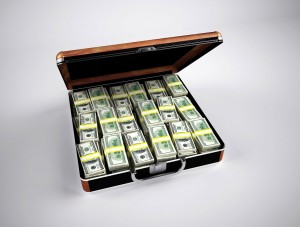The idea of Special Drawing Rights as a threat to the dollar is not as compelling as I had originally thought.
 Bullion.Directory precious metals analysis 19 December, 2014
Bullion.Directory precious metals analysis 19 December, 2014
By Terry Kinder
Investor, Technical Analyst
There was something beautiful about the article’s simplicity and central thesis that 1) The IMF is considering revoking the U.S. veto over its decisions; and 2) The IMF may include the Chinese Renminbi within its Special Drawing Rights late in 2015. On its face, the argument of Brandon Smith, Jim Rickards and others, that inclusion of the Renminbi as part of the numeraire of the Special Drawing Rights will mark a seismic shift away from the dollar sounds compelling.
But, something about the idea kept eating at me, and I felt compelled to dig deeper and take a closer look at this – at least within the gold community – popular idea and found it wanting.
I’m not happy about what I wrote yesterday in “End of Dollar Dominance Near?”
In retrospect it doesn’t represent my best work and I don’t feel that I applied a high enough level of skepticism to the arguments presented by those who place importance on the inclusion of the Renminbi within the Special Drawing Rights.
Quite obviously such a move would represent a shift, but it isn’t clear whether it would represent a displacement of the United States from its central role within the international monetary system. So, I want to offer my apologies for not vetting the article carefully enought. I strive to provide well researched and well thought out articles, but in this case I fell far short of my own standards and the standard you should expect.
However, I hope this article will balance the shortcomings of the previous one, and provide some insights about the importance, or lack thereof, of Special Drawing Rights, as well as the idea that the inclusion of the Chinese Renminbi would represent an important event and threat to the primacy of the dollar.
There are a couple of problems with the idea that the Chinese Renminbi will be included as part of the IMF’s Special Drawing Rights.

Special Drawing Rights Thought Experiment: Have you ever seen a movie where somebody makes a huge transaction in cash and when they pop open the briefcase it is full of Special Drawing Rights? Didn’t think so.
1. The Renminbi doesn’t appear to actually meet the criteria because the Renminbi isn’t fully convertible and it isn’t a reserve currency (a);
2. The U.S. could exercise its veto power and refuse to allow the Renminbi to be included in the Special Drawing Rights (b).
But, even assuming that China has made enough progress for the IMF to approve the inclusion of the Renminbi within the Special Drawing Rights, it may have an insignificant impact on the dollar and could even strengthen the dollar’s influence within it.
One argument that makes the rounds within the gold community is that the Special Drawing Rights may be an intermediate step towards ushering in a single global reserve currency. I certainly wouldn’t argue that such a path is impossible, just consider how the Eurozone evolved through various steps, including the European Monetary Union (EMU). Nevertheless, there are some weaknesses behind the idea of Special Drawing Rights representing an intermediate step on the way to one world currency.
1. The Special Drawing Rights isn’t a currency or even (as it is often referred to) a basket of currencies (c);
2. Instead of being a reserve currency which could provide liquidity in the event of another global financial crisis, the Special Drawing Rights are a reserve-pooling arrangement that helps re-allocate liquidity from those that have it to those that need it (d);
3. Inclusion of the Renminbi as part of the Special Drawing Rights’ numeraire, contrary to much of what has been written, will in fact strengthen rather than weaken the dollar within the SDR as China heavily manages the Renminbi against the dollar (e).
The Renminbi Special Drawing Rights meme ignores what may be very practical considerations possibly guiding the Chinese government that, rather than seeking global dominance, could simply be jockeying for a better position.
1. China, and Russia as well, have argued that the current international monetary arrangement is not equitable and ignores the interest of emerging market economies. The BRICS, through the creation of the New Development Bank, hope to create an alternative to the World Bank and International Monetary Fund which they argue are too influenced by the United States (f);
2. China could be attempting to gain the benefits of reserve currency status without having to open up its capital account as has been cited by Jim Rickards;
3. Inclusion of the Renminbi within the Special Drawing Rights would make the Renminbi’s effective exchange rate more rigid, which would foster faster per capita output growth (g).
The kicker to the whole argument is that all of the same obstacles that stand in the way of the Renminbi achieving reserve currency status apply to Special Drawing Rights in spades.
There is no broad, deep market where Special Drawing Rights are traded. Special Drawing Rights aren’t a currency, nor are they a basket of currencies. Outside of a small circle of central banks, economists, international organizations, and a small slice of the gold community, few have any idea of what they are. Special Drawing Rights don’t increase liquidity in the event of a global economic crisis, but instead merely re-allocates liquidity.
Special Drawing Rights don’t trade on FX markets, and there has rarely been any issuance of Special Drawing Rights bonds. Given how far away the Special Drawing Rights are from being able to achieve reserve currency status, it would make much more sense for the Chinese to continue their efforts to achieve reserve currency status for the Renminbi on their own. Of course, that assumes China even wants to do so which is a giant, and perhaps incorrect assumption.
You cannot look at the Chinese Renminbi / Special Drawing Rights meme without questioning the assumption of whether or not China wants to open up their society and economy sufficiently to be able win reserve currency status for the Renminbi.
To do so requires much, much more than China merely opening up their capital account. For China to overturn the dollar would require China to give their citizens a greater say in their government and economy. For the Renminbi to become a reserve currency, China would have to relinquish central planning which lies at the heart of the communist system. China, for years, has experimented with being a little bit capitalistic, which seems a bit like being a little bit pregnant. Either you are a capitalist or communist system. Either the people of a nation are free or they are not. You have free markets or you do not. China achieving reserve currency status for the Renminbi isn’t a matter of the IMF waiving their magic wand and including the Renminbi as part of the numeraire for their ethereal Special Drawing Rights. Achieving reserve currency status isn’t about China opening up their economy just a little bit more. At least in the modern age, reserve currency status has not been achieved by nations that half-heartedly support individual liberty, property rights, and individual achievement that pushes progress forward for the vast bulk of the citizenry.
Perhaps China will be different, but you have to ignore several hundred years of history to come to that conclusion.
Thought Experiment #1
Here’s something to consider about Special Drawing Rights. Can you close your eyes and picture the symbol for the U.S. Dollar, British Pound, Japanese Yen and the Euro? How about picturing in your mind the symbol for the Special Drawing Rights. The Special Drawing Rights, in this day and age, has a bit of a marketing problem. It’s a bit like the restaurant that decides it wants to be like McDonald’s, Burger King, Kentucky Fried Chicken and Taco Bell, and fails miserably because it ends up being a bland, confusing mess. Considering just how vaporous the Special Drawing Rights are and that you can’t easily describe them to people accustomed to dollars, pounds, yen and euros, it seems like a stretch that somehow the inclusion of the Renminbi with the Special Drawing Rights will overcome all of the already mentioned weaknesses and somehow dethrone the dollar.
Thought Experiment #2
Have you ever seen a movie where somebody makes a huge transaction in cash and when they pop open the briefcase it is full of Special Drawing Rights? Didn’t think so.
Thought Experiment #3
Imagine you’re in a Capital One commercial with Samuel L. Jackson. He asks you, “What’s in your wallet?” You reply, “Special Drawing Rights.” Try to imagine him not punching you square in the face.
Bullion.Directory or anyone involved with Bullion.Directory will not accept any liability for loss or damage as a result of reliance on the information including data, quotes, charts and buy/sell signals contained within this website. Please be fully informed regarding the risks and costs associated with trading in precious metals. Bullion.Directory advises you to always consult with a qualified and registered specialist advisor before investing in precious metals.











 Material provided on the Bullion.Directory website is strictly for informational purposes only. The content is developed from sources believed to be providing accurate information. No information on this website is intended as investment, tax or legal advice and must not be relied upon as such. Please consult legal or tax professionals for specific information regarding your individual situation. Precious metals carry risk and investors requiring advice should always consult a properly qualified advisor. Bullion.Directory, it's staff or affiliates do not accept any liability for loss, damages, or loss of profit resulting from readers investment decisions.
Material provided on the Bullion.Directory website is strictly for informational purposes only. The content is developed from sources believed to be providing accurate information. No information on this website is intended as investment, tax or legal advice and must not be relied upon as such. Please consult legal or tax professionals for specific information regarding your individual situation. Precious metals carry risk and investors requiring advice should always consult a properly qualified advisor. Bullion.Directory, it's staff or affiliates do not accept any liability for loss, damages, or loss of profit resulting from readers investment decisions.

Richards believes the dollar as it currently is will be obsolete in the near future. His arguments are rather compelling, and his books are well researched and cited.
Richards foresees the SDR “replace” the dollar. The Fed’s balance sheet has 80:1 leverage, while the IMF’s balance sheet is only 3:1. I suppose in laymen terms, the IMF, according to Richards will have to bail out the US.
Chris, you mean Rickards?